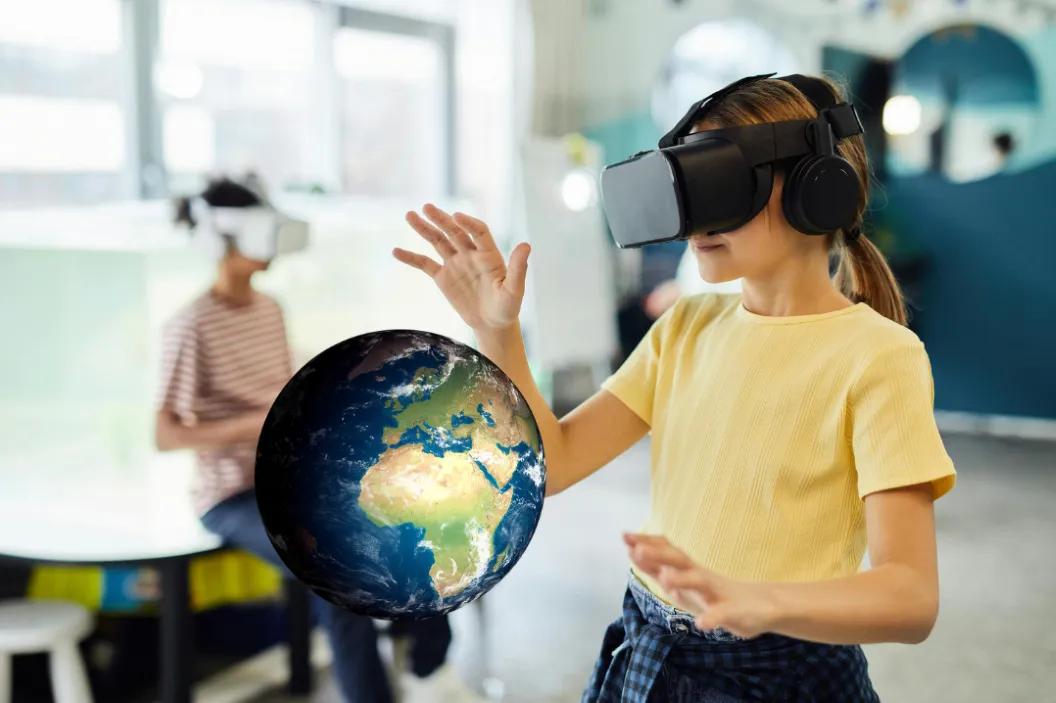Extended Reality: The Future of Learning?
In the ever-evolving landscape of education, technological advancements continue redefining how students learn and teachers instruct. One such innovation that has garnered significant attention is Extended Reality (XR), a spectrum that encompasses all immersive technologies, including Virtual Reality (VR), Augmented Reality (AR), and Mixed Reality (MR). VR immerses users in a fully digital environment, completely replacing their physical surroundings. AR overlays digital content onto the real world, enhancing users' perception of their environment. MR blends virtual content with the user's environment, allowing users to interact with digital and physical objects in real-time. As educators increasingly explore the possibilities of XR, its integration into classrooms holds promise for enhancing engagement, collaboration, and knowledge retention.
One of the most compelling aspects of XR in education is its ability to create immersive learning environments that transcend the limitations of traditional classrooms. Through VR simulations, students can embark on virtual field trips to historical landmarks, dive into the ocean's depths, or explore distant planets in outer space—all from the comfort of their classroom. This immersive approach captivates students' attention and allows them to experience concepts first-hand, making learning more memorable and meaningful.
Similarly, AR technology overlays digital information onto the real world, offering opportunities for interactive learning experiences. For instance, anatomy students can use AR apps to visualise and interact with 3D human body models, dissecting virtual organs and exploring their functions in real-time. By bringing abstract concepts to life, AR enhances comprehension and retention, paving the way for more effective learning outcomes.
XR technologies also facilitate personalised learning experiences tailored to individual student needs. By adapting content and pacing based on students' progress and preferences, XR platforms can cater to diverse learning styles and abilities. For instance, in a VR environment, students can control their learning pace, revisit challenging concepts, or receive instant feedback on their performance—all without the fear of judgment or embarrassment. Moreover, XR has the potential to make education more accessible to students with disabilities. For example, VR simulations can simulate real-world scenarios for students with mobility issues, enabling them to participate in otherwise inaccessible activities.
Although the immersive nature of XR often conjures images of solitary experiences, these technologies also foster collaboration and social interaction among students. Through virtual classrooms and collaborative platforms, students from diverse backgrounds can connect with experts, educators, and peers worldwide, expanding their horizons and accessing resources that may not be available locally. This democratisation of education has the potential to narrow the educational gap and provide equal opportunities for all learners.
While the potential benefits of integrating XR into education are vast, several challenges must be addressed to realise its full potential. Cost remains a significant barrier, as implementing XR technologies requires substantial hardware, software, and training investment. Additionally, ensuring equitable access to XR tools and resources is crucial to prevent further exacerbating existing educational disparities.
Furthermore, concerns regarding privacy, data security, and the ethical use of immersive technologies must be carefully addressed. Educators and policymakers must establish clear guidelines and safeguards to protect students' privacy and ensure responsible use of XR in educational settings. Moreover, the effectiveness of XR in education depends on the quality of content and instructional design. Educators must undergo training to effectively integrate XR into their teaching practices and develop immersive experiences that align with curriculum objectives and learning goals.
As technology continues to reshape the education landscape, the integration of Extended Reality holds immense promise for transforming teaching and learning. However, realising the full potential of XR in education requires concerted efforts from educators, policymakers, and industry stakeholders to address challenges and ensure equitable access and responsible use of immersive technologies.
Lim Woan Ning
School of Engineering and Technology
Email: @email




